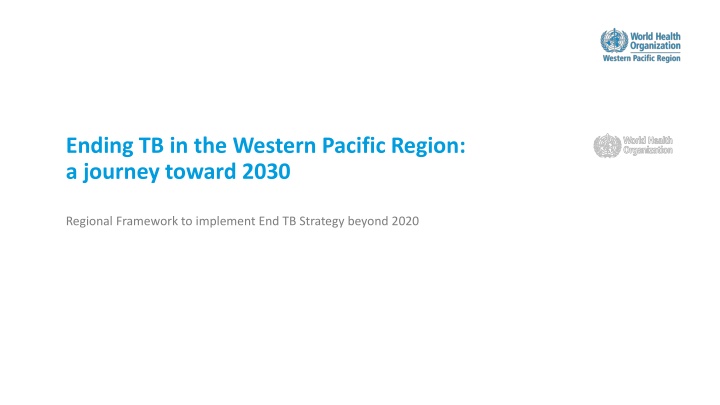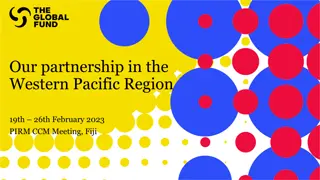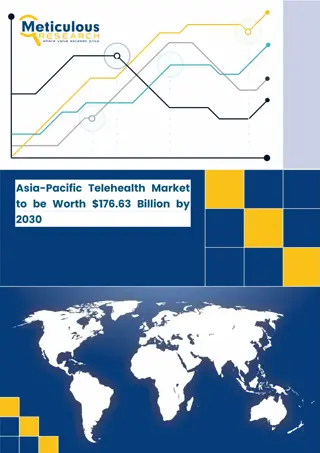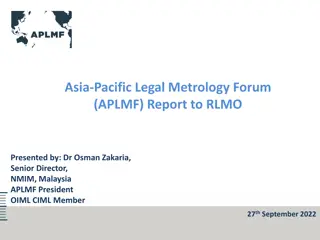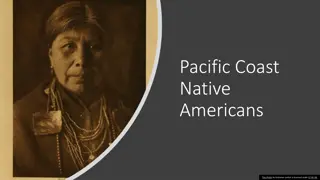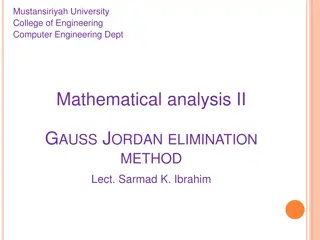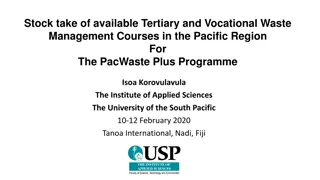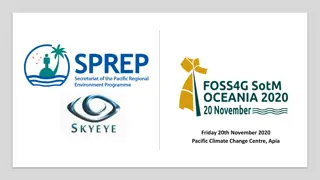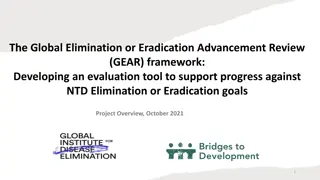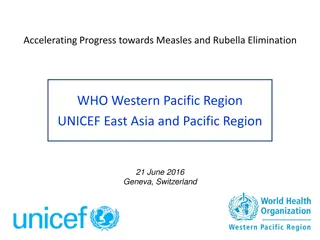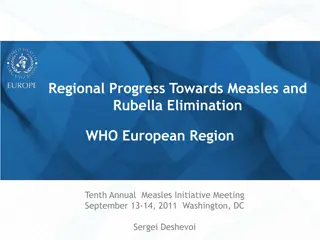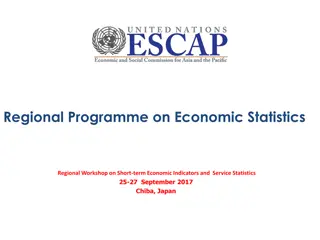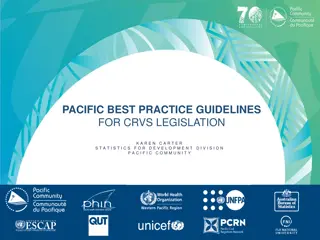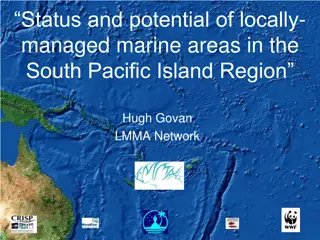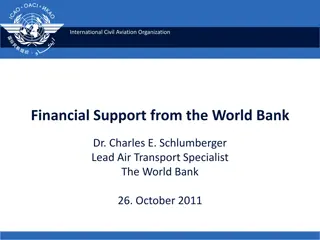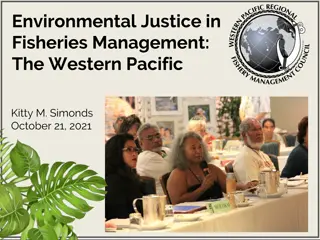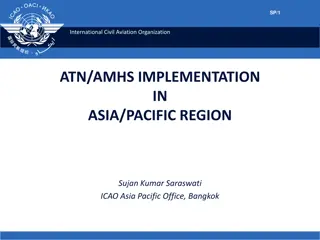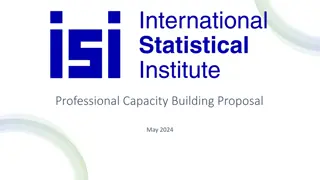Advancing Toward TB Elimination in Western Pacific Region by 2030
Journey towards ending TB in the Western Pacific Region beyond 2020 involves implementing a regional framework to address social determinants, introduce new tools, and ensure universal coverage. The 2030 vision requires a combination of interventions and tools to achieve a significant decline in TB incidence. Back-casting and analyzing current challenges, future actions are proposed to prioritize prevention, diagnosis, treatment, system strengthening, research, and community engagement.
Download Presentation

Please find below an Image/Link to download the presentation.
The content on the website is provided AS IS for your information and personal use only. It may not be sold, licensed, or shared on other websites without obtaining consent from the author.If you encounter any issues during the download, it is possible that the publisher has removed the file from their server.
You are allowed to download the files provided on this website for personal or commercial use, subject to the condition that they are used lawfully. All files are the property of their respective owners.
The content on the website is provided AS IS for your information and personal use only. It may not be sold, licensed, or shared on other websites without obtaining consent from the author.
E N D
Presentation Transcript
Ending TB in the Western Pacific Region: a journey toward 2030 Regional Framework to implement End TB Strategy beyond 2020
Future scenario: TB in 2030 Social determinants of TB largely addressed Current trend Universal coverage for TB is mostly ensured INCIDENCE New tools are effectively introduced Incidence and mortality reduced dramatically New tools introduced (vaccine, drugs, test) Majority are intermediate and low burden countries Approaching pre- elimination level Concentrated in high-risk groups Big proportions are due to reactivation of old infection 2020 2030 2025 Outbreak response as a norm TODAY 10 YEARS 5 YEARS End TB Strategy assumption
The 2030 vision requires a combination of tools Modeled estimates of TB incidence with different interventions, 2019-2030 Results of modelling; A slow decline in incidence (9%) is expected Optimal coverage of the current tools is needed to Baseline accelerate the progress Xpert ACF - Systematic screening (ACF) - Xpert expansion - TB preventive therapy ACF + TPT Combined New tool(s) are necessary to reach the 2030 target Extremely profitable investment, providing at least a four-fold return on investments
Overview of the Framework document BACK-CASTING What is the ideal scenario for TB in WPR in 2030? What does the system look like when TB is eliminated? What steps are required to achieve the ideal scenario? Future vision in 2030 System Modality Disease Burden ANALYSIS OF CURRENT AND FUTURE CHALLENGE Where are we now? Impediments to achieve the future scenario Drivers for future TB epidemic in WPR - Demographic transition - Economic transition - Epidemiological transition Different Actors Premise for the Framework Region Specific Future PROPOSED ACTIONS Priorities and approaches Linking with other priorities What can we do today? - Essentials: Prevention, Diagnosis, Treatment - Foundations: System, Research, community engagement - Environment: Multi-sectoral collaboration - Overarching: Coordination and accountability Response Framework
Priorities and Approaches Principles Operational modalities Social Justice | Ethics | Human Rights 1. System approach to strengthen service delivery Approach Country Focus | Multi-sectoral approach 2. Information for action 3. Strategic communication and change management Action Domain 1. Strengthen Essential TB Functions (within TB) 2. Build Health system foundations (within Health) 4. Innovations and rapid uptake 3. Promote Health beyond Health (beyond Health) 4. Coordination and accountability (Overarching)
Multi-sectoral approach Within Health Beyond Health Direct Direct NCD Nutrition MNCH HIV Substance abuse Mental health Occupational health Medical education Private health sector Labor Prison Justice Defense Mining Pharmaceutical sector Proposed steps; Identify specific role of each sector Agree monitoring framework in line with SDG Indirect Finance Social Energy Education Housing Media Sports Health Insurance Employment insurance (reimbursements/cash transfer) Develop narrative ensuring win-win for all sectors Indirect Private philanthropy Providing tools for policy makers
Interconnectedness of the cause and effect of TB disease Upstream determinants Weak and inequitable social and economic policies lack of social protection Urbanization Climate change Migration Stigma, discrimination and marginalization Poverty, poor living and working conditions, low socio- economic status, and low-education Food insecurity Unhealthy behaviours Downstream risk factors Vulnerabilities (e.g. children, elderly, women, migrants, substance abusers, HCWs) Crowding, poor ventilation (e.g. slums, mining, prisons) NCDs and their risk factors e.g. diabetes, alcohol, tobacco, Zoonotic risk Silica dust, air pollution Malnutrition HIV / AIDS Environmental conditions favouring transmission Impaired host defence / susceptibility Death Exposure Infection Active disease Cured Universal coverage and access to diagnosis, care and prevention L nnroth K, Jaramillo E, Williams B, Dye C, Raviglione M. Tuberculosis: the role of risk factors and social determinants. World Health Organization 2010: 219-241. Geneva, Switzerland. Further modified by Villa S and Raviglione M
Considerations HBCs Specific activities per response Proposed Responses by Action Domain LIMBs TB functions Essentials 1. Ensure early diagnosis and notification 2. Ensure people-centered care services 3. Prevent TB infection and diseases Health system 1. Contribute to universal health coverage Foundations 2. Enhance collaboration for managing risk factors and co-morbidities 3. Establish/strengthen national level research networks 4. Establish networks of community and civil society beyond Health Health 1. Contribute to enhancing social protection mechanism 2. Promote whole-of-government and whole-of-society approach 1. Establish and sustain proper financing mechanisms 2. Manage translation of policy to practice 3. Develop coordination mechanism and implement the accountability framework for TB 4. Manage TB care in emergency situations accountability Governance and
THANK YOU Acknowledgements: TAG members, rGLC WHO colleagues of CO, RO and HQ NTP and partners attended in pre TAG Welcome comments/suggestions
